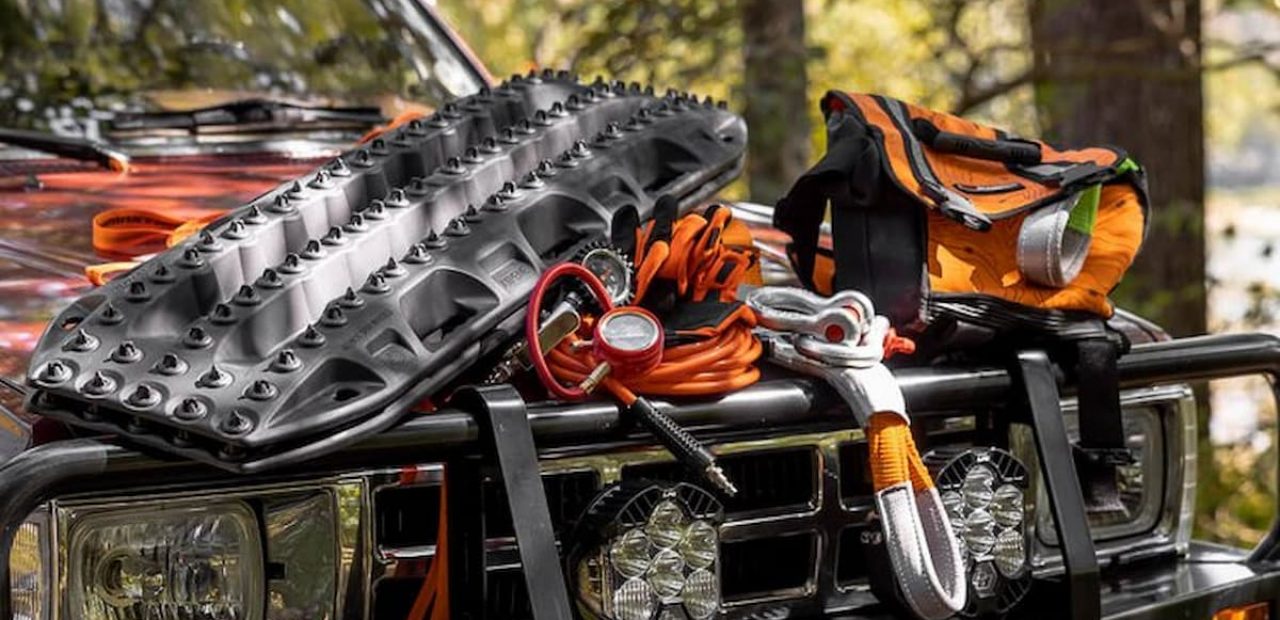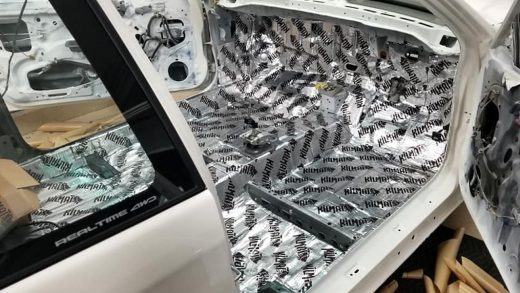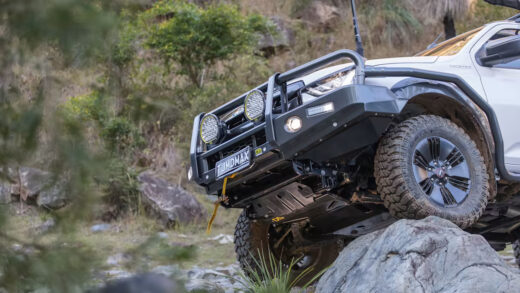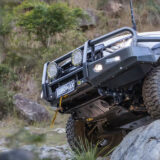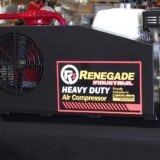4×4 Recovery: The 3 Most Popular Pieces of Recovery Equipment
Owning a 4×4 opens up a new world of opportunities for you. The Australian continent is one of the most interesting ones to explore, as it has tons of pristine places untouched by civilization. It’s one of the reasons why many Australians opt for 4×4 vehicles in the first place. However, as most people know, the Australian outback and wilderness aren’t the most friendly places to travel through. Getting stuck in the middle of nowhere is the last thing you want, and help can be hundreds if not thousands of kilometres away. That being said, it’s important to prepare yourself should such an occasion arise. But how can someone ever prepare themselves for such a thing? The answer is – by having the right recovery equipment.
There are many different pieces of recovery equipment, and while they all do the same thing, they do so using different methods. The three most popular pieces are electric winches, recovery tracks, and high-lift jacks.
Contents
Electric Winches
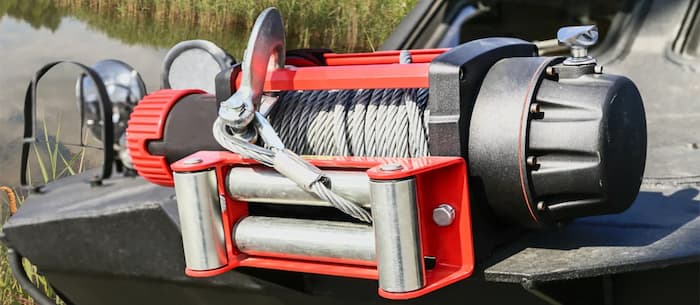
This is arguably the most popular piece of recovery equipment. Electric winches require little to no manual effort in getting your vehicle out of any sticky situation. All you have to do is find an object nearby, which can be a tree or another vehicle, tie the winch rope around or on that object, press a button, and voila – you’re free. However, winches are also the most expensive piece of recovery equipment. In order to safely use a winch, you need to have a spot to mount it. Generally, bull bars are the sweet spot, as long as they’re rated to hold and use a winch. Using this recovery method is considered the safest, as there’s the least involvement from you.
Recovery Tracks
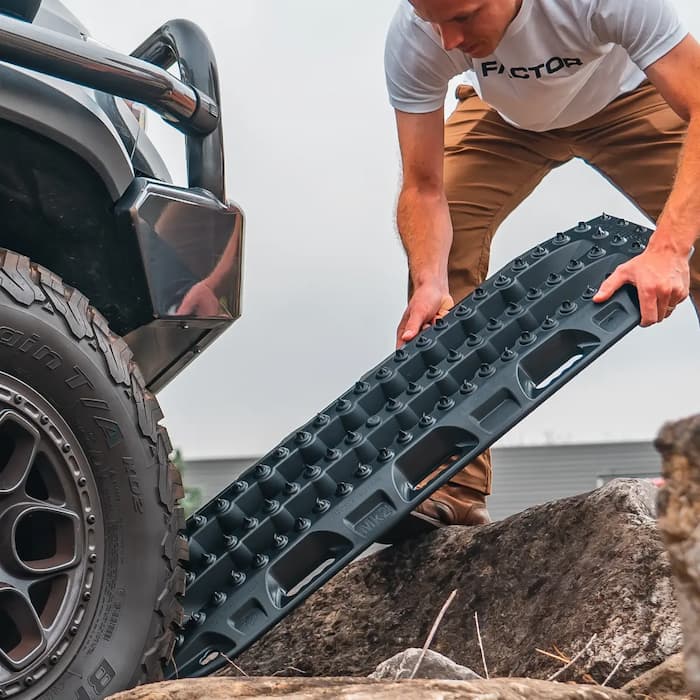
Recovery tracks are the polar opposite of winches. They’re the most affordable pieces of recovery equipment, and require the most manual effort to be used. You’ll have to dig a bit around your tyres, and place them under so that your vehicle can have a surface with traction to gain momentum and get out of mud, snow or anything else. You can use a shovel to dig around the tyre, or the recovery tracks themselves. Furthermore, recovery tracks don’t require a lot of storage space, and some models feature a nesting design to be even more compact.
High-Lift Jack
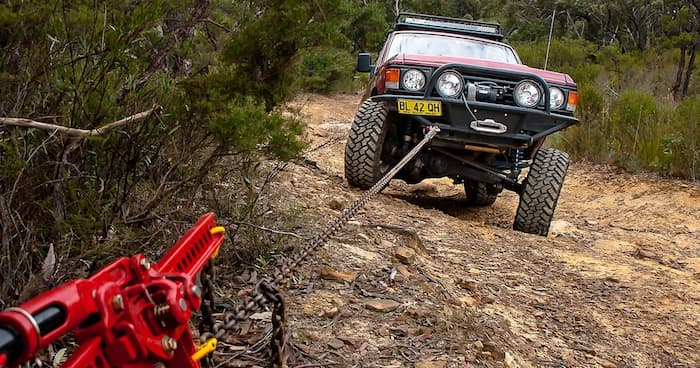
The high-lift jack is considered the middle ground of recovery equipment. It’s a completely mechanical piece of equipment, so there are few things that can go wrong. When using a high-lift jack, safety is paramount. After all, the weight of your vehicle will be placed on it. That being said, make sure your vehicle has rated high-lift jack points. Furthermore, make sure to place the jack on level, hard ground for stability. If the ground you’re stuck in is soft or uneven, you can get a high-lift jack base plate. Speaking of which, there are a few accessories to make using the jack more convenient.
Why Do People Get Stuck in the First Place?
You can get stuck for a variety of reasons. The most common one, however, is improper tyre pressure. When going off the road, reducing the amount of air in your tyres is essential, as you want to cushion your vehicle, and increase traction as well as flotation. This is especially important when travelling through softer surfaces like beaches and muddy terrain. If you’re going to drive across different types of terrain on your trip, consider getting a tyre deflator so you can adjust the tyre pressure on the go. Consider getting a pacesetter y pipe as well, in order to provide more airflow to your engine. Heat and dust can be a problem for your engine, suffocating it and resulting in overheating and other problems.
Another common reason for getting stuck is low clearance. If you have low clearance, going over high obstacles will be problematic, and potentially fatal to your undercarriage. A lot of people lift their 4x4s to improve clearance, as well as the departure and approach angles. Understanding how and why you may get stuck is paramount to prevention and deciding on the best methods to get unstuck.
When Recovering Your Vehicle…
Recovering your vehicle can be stressful, so it’s important to be patient and careful. Rushing anything can result in costly mistakes, such as damaging your vehicle or worse – hurting yourself. If you’re not alone, get all hands on deck, and have people help you. Snatch straps are a recovery method that I didn’t mention, yet some people opt for. The reason I didn’t mention it is because it involves the most risks, and is generally not worth it. Recovery tracks should be your go-to equipment and method, as they’re affordable, compact and relatively easy to use.
I always recommend that people have at least two pieces of recovery equipment, as you can combine their uses to make for an easier recovery. Plus, one method may be better in some cases than the other, and vice versa, and having two methods can bring piece of mind knowing that no matter where and how you get stuck, you’ll get yourself out.

